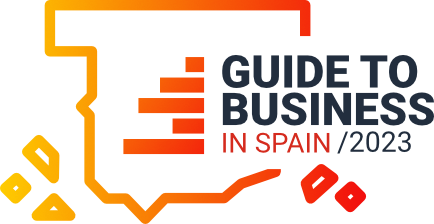- #
- 1
Spain: An attractive country for investment
- 2
Setting up a business in Spain
- 3
Tax System
- 4
Investment aid and incentives in Spain
- 5
Labor and social security regulations
- 6
Intellectual property law
- 7
Legal framework and tax implications of e-commerce in Spain
-
Downloads
- AI
Company and Commercial Law
- AII
The Spanish financial system
- AIII
Accounting and audit issues

- Introduction
- State incentives for training and employment
- State incentives for specific industries
- Incentives for investments in certain regions
- Aid for innovative SMEs
- Preferred financing of the Official Credit Institute (Instituto de Crédito Oficial or ICO)
- Internationalization incentives
- EU aid and incentives
8. EU aid and incentives
8.2. European Investment Fund (EIF)
The EIF is an EU body which specializes in providing guarantee and venture capital instruments to SMEs for better access to funding. Its principal shareholder is the EIB itself, although the European Commission and a wide range of financial institutions across Europe also own holdings in its capital stock.
It uses, for its activities, equity capital or funds provided by the EIB or the European Union, the Member States, or other third parties.
It is neither a lending institution nor does it provide subsidies to enterprises or directly invest in them. All of its work is carried out through banks and other financial intermediaries. Moreover, it ensures the continuity required in the management of EU programs and has accumulated extensive experience in this area.
The EIF was created for purpose of fostering EU objectives, particularly in the areas of entrepreneurship, growth, innovation, research and development, employment and regional development. Today, the core mission of the EIF is to provide support to SMEs and grant them access to funding at a time of reduced financing granted by credit institutions. To meet this objective, and according to the needs of each regional market, the EIF designs innovative financial products aimed at its partners.
The work of the EIF can be classed according to the financial products (capital and debt) offered, which include most notably:
- Venture Capital Products: The EIF invests in venture capital funds that, in turn, provide financing to innovative SMEs.
- Debt Products: In these cases, the EIF provides security and credit enhancements to financial intermediaries to facilitate the flow of funds from financial institutions to SMEs.
- Microfinance: The EIF provides financing, security and technical assistance to financial institutions for their microfinance activities..
Indeed, although the EIF mainly uses venture capital instruments as a means of making capital more available to high-growth innovative SMEs, the Fund also offers debt instruments, having found that many SMEs seek financing through this more traditional route. From this standpoint, the EIF offers security and credit enhancements by means of the securitization of credit, in order to improve the lending capacity of financial intermediaries and, as a result, and ultimately, the availability and terms of the debt for the SME beneficiaries.
The forecast volume of investment from the EIF, on April 27, 2020, amounted to approximately 1.707 billion euros.11
The following table summarizes the main instruments and initiatives promoted by the EIF and the potential beneficiaries thereof:
| Selected Financial Intermediary | What is available | Who is eligible? | Initiative |
|---|---|---|---|
|
|
| |
|
| ||
|
|
| |
|
|
| |
|
| ||
|
|
| |
|
| ||
|
|
| |
|
|
|
|
|
|
|
|
|
|
| |
|
|
|
|
|
|
|


